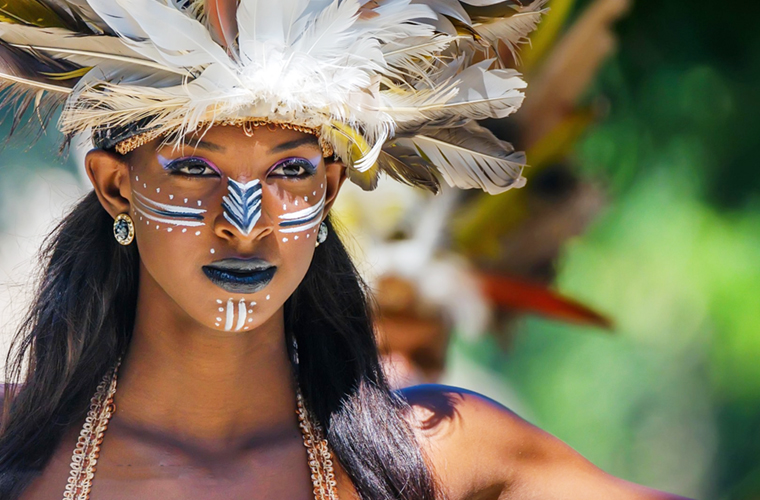The Taíno people were a pre-Columbian indigenous group who inhabited the Caribbean islands, including present-day Cuba, Jamaica, Hispaniola (Haiti and the Dominican Republic), Puerto Rico, and the Bahamas. They were known for their advanced agricultural practices, intricate pottery, and unique social and religious customs. The Taíno people lived in small, autonomous communities led by a chief or cacique. They practiced a form of agriculture known as conuco, which involved cultivating small plots of land with a variety of crops, including maize, cassava, sweet potatoes, and peppers. This agricultural system allowed the Taíno to sustain relatively large populations and develop complex societies.
In addition to their agricultural prowess, the Taíno were skilled artisans, creating intricate pottery and stone tools. They also excelled in the production of cotton textiles and were known for their intricate designs and vibrant colors. The Taíno had a complex social structure, with a hierarchy of chiefs, priests, and commoners. They also had a system of governance that involved consensus decision-making and community participation in important matters. This system allowed for a relatively peaceful and harmonious society.












Religion played a significant role in Taíno culture, with a pantheon of deities associated with natural elements such as the sun, moon, and sea. The Taíno also practiced elaborate rituals and ceremonies, including the ball game known as batey, which had both religious and social significance. The arrival of Christopher Columbus in 1492 marked the beginning of the end for the Taíno people. The Spanish conquest led to widespread disease, forced labor, and violent conflict, resulting in the decimation of the Taíno population. Many Taíno were also forcibly assimilated into Spanish culture, leading to the loss of traditional customs and language.
Despite their tragic demise, the legacy of the Taíno people lives on in the cultural heritage of the Caribbean. Many aspects of Taíno culture, such as their language, food, music, and art, continue to influence the region today. Efforts to preserve and revitalize Taíno heritage are ongoing, with initiatives aimed at reclaiming and celebrating their rich history.
In conclusion, the Taíno people were a vibrant and sophisticated indigenous group whose contributions to Caribbean culture and history cannot be overstated. Their agricultural ingenuity, artistic achievements, social organization, and spiritual beliefs continue to resonate in the modern-day Caribbean, serving as a testament to the enduring legacy of this remarkable civilization.

